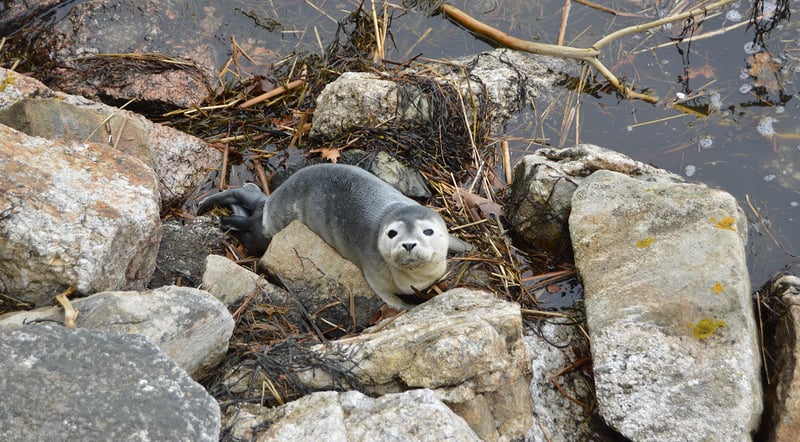
Packing bands entangle seals and sea lions around the world
News
Study identifies regulatory measures and alternative materials as solutions to reduce the widespread entanglement of certain animals
A new study by Elizabeth Hogan, our Campaigns Manager for Oceans and Wildlife and Amanda Warlick of ECS Federal, LLC, published in Journal of International Wildlife Law & Policy examines the characteristics of packing bands commonly found to entangle seals and sea lions and offers practical steps that may reduce such entanglements.
Marine debris causes the entanglement of sea animals around the world, killing hundreds of thousands of whales, dolphins, sharks, seals, turtles and birds annually.
58% of seal and sea lion species have been affected by entanglement, including the critically endangered Hawaiian monk seal.
Packing bands, one of the most pervasive forms of this debris, are known to frequently entangle seals and sea lions.
Hogan and Warlick’s paper offers a review and analysis of packing band materials retrieved from entangled seals and sea lions by stranding rescue professionals around the world. In the authors’ study of 93 samples received, pinnipeds were the vast majority of the species observed with entanglements, all but three of these caused by packing bands.
Other species with packing band entanglements included turtles and birds.
The authors’ study examines the physical characteristics of packing bands commonly entangling seals and sea lions. Red bands caused the fewest entanglements, consistent with past field trials finding that red or orange ropes were the least likely to entangle whales, as whales could detect those colors at greater distances.
The study also looks at width and chemical composition of packing bands, with commonly used materials increasing the risk of injury to animals because of their rigidity.
Importantly, Hogan and Warlick conclude that clear possible solutions with the potential to reduce pinniped entanglement exist. The authors note that past regulatory action has achieved far-reaching success, citing the pivotal example of the 1994 Degradable Plastic Ring Rule in the United States, which mandated that beverage ring 6-pack carriers be made of photodegradable material that breaks down upon sunlight exposure.
While alternative materials may be effective as a long-term solution for packing band entanglement, the authors argue that legislative action could make a significant impact in the short term. In Western Australia, the use of packing bands was banned altogether on recreational and commercial fishing vessels in an effort to reduce marine mammal entanglement in 2009.
The authors suggest that similar bans aimed at bands likely to end up in the ocean, such as those used on fish bait boxes, could potentially help to curb marine mammal entanglements.
Click here to read the full study.
Top image courtesy of Marine Mammals of Maine
58% of seal and sea lion species have been affected by entanglement, including the critically endangered Hawaiian monk seal.